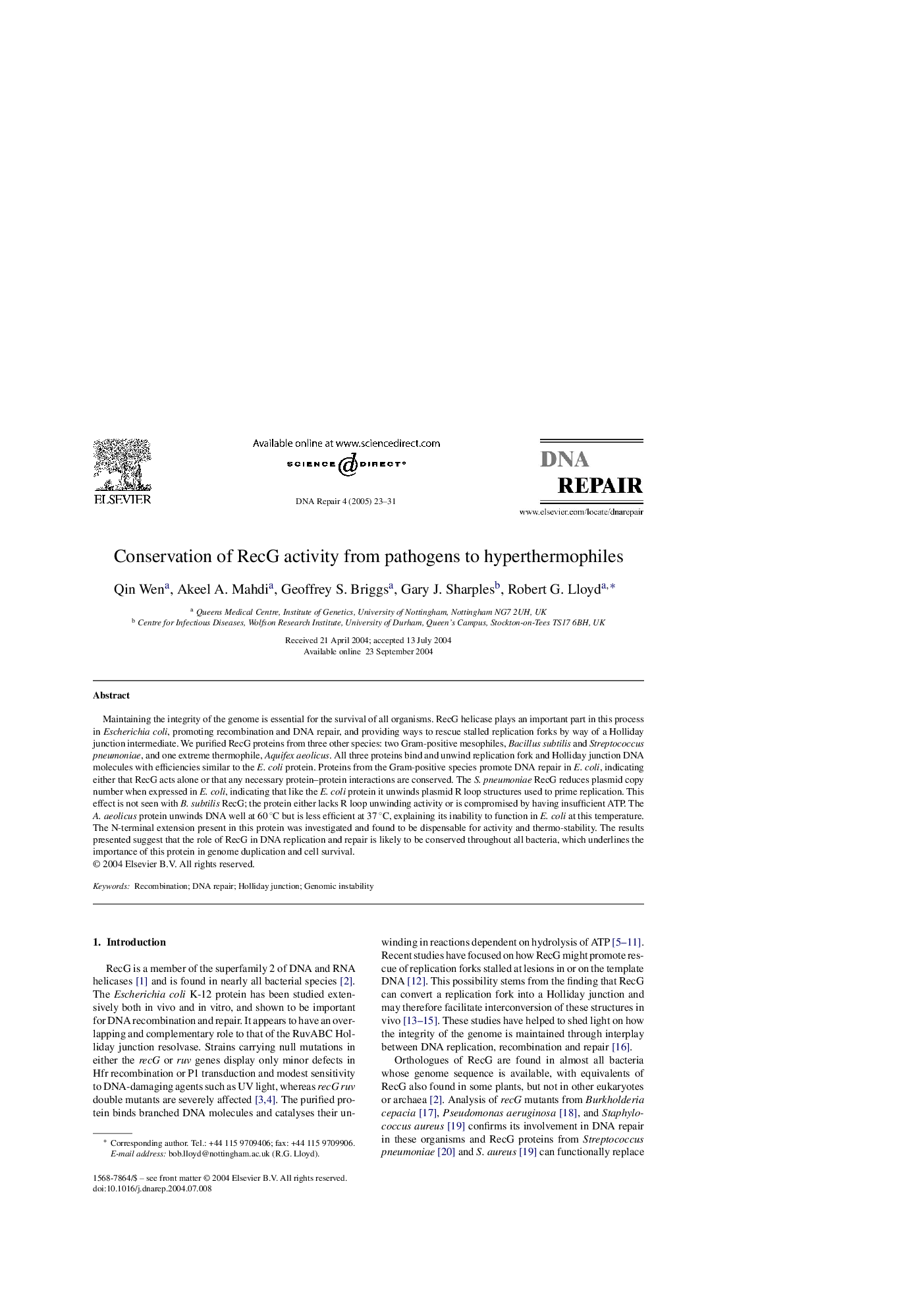| Article ID | Journal | Published Year | Pages | File Type |
|---|---|---|---|---|
| 10823703 | DNA Repair | 2005 | 9 Pages |
Abstract
Maintaining the integrity of the genome is essential for the survival of all organisms. RecG helicase plays an important part in this process in Escherichia coli, promoting recombination and DNA repair, and providing ways to rescue stalled replication forks by way of a Holliday junction intermediate. We purified RecG proteins from three other species: two Gram-positive mesophiles, Bacillus subtilis and Streptococcus pneumoniae, and one extreme thermophile, Aquifex aeolicus. All three proteins bind and unwind replication fork and Holliday junction DNA molecules with efficiencies similar to the E. coli protein. Proteins from the Gram-positive species promote DNA repair in E. coli, indicating either that RecG acts alone or that any necessary protein-protein interactions are conserved. The S. pneumoniae RecG reduces plasmid copy number when expressed in E. coli, indicating that like the E. coli protein it unwinds plasmid R loop structures used to prime replication. This effect is not seen with B. subtilis RecG; the protein either lacks R loop unwinding activity or is compromised by having insufficient ATP. The A. aeolicus protein unwinds DNA well at 60 °C but is less efficient at 37 °C, explaining its inability to function in E. coli at this temperature. The N-terminal extension present in this protein was investigated and found to be dispensable for activity and thermo-stability. The results presented suggest that the role of RecG in DNA replication and repair is likely to be conserved throughout all bacteria, which underlines the importance of this protein in genome duplication and cell survival.
Related Topics
Life Sciences
Biochemistry, Genetics and Molecular Biology
Biochemistry
Authors
Qin Wen, Akeel A. Mahdi, Geoffrey S. Briggs, Gary J. Sharples, Robert G. Lloyd,
